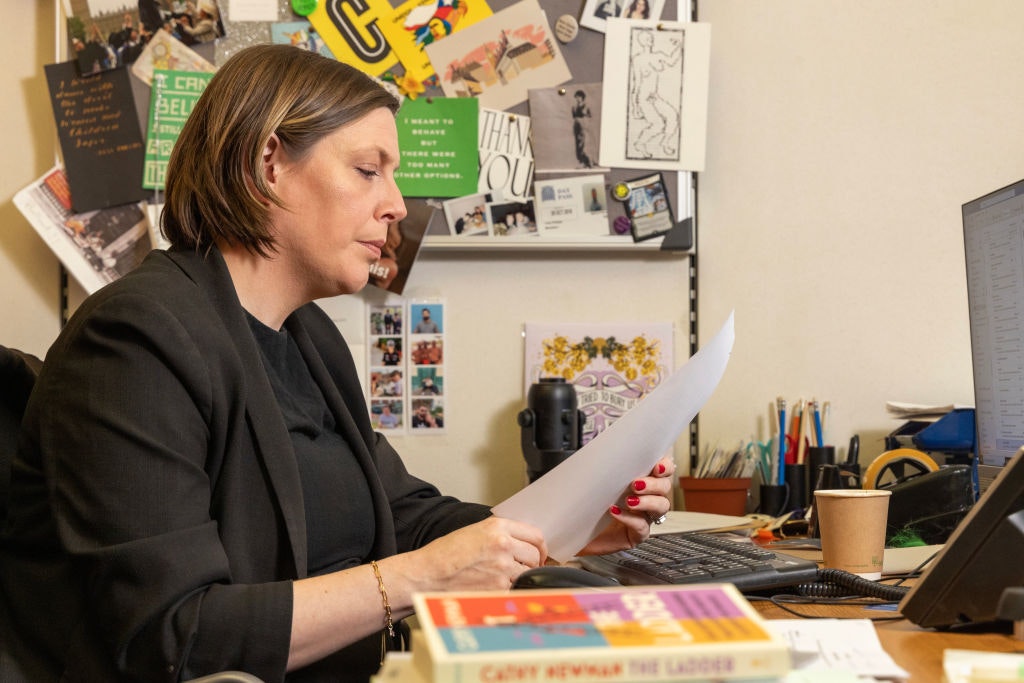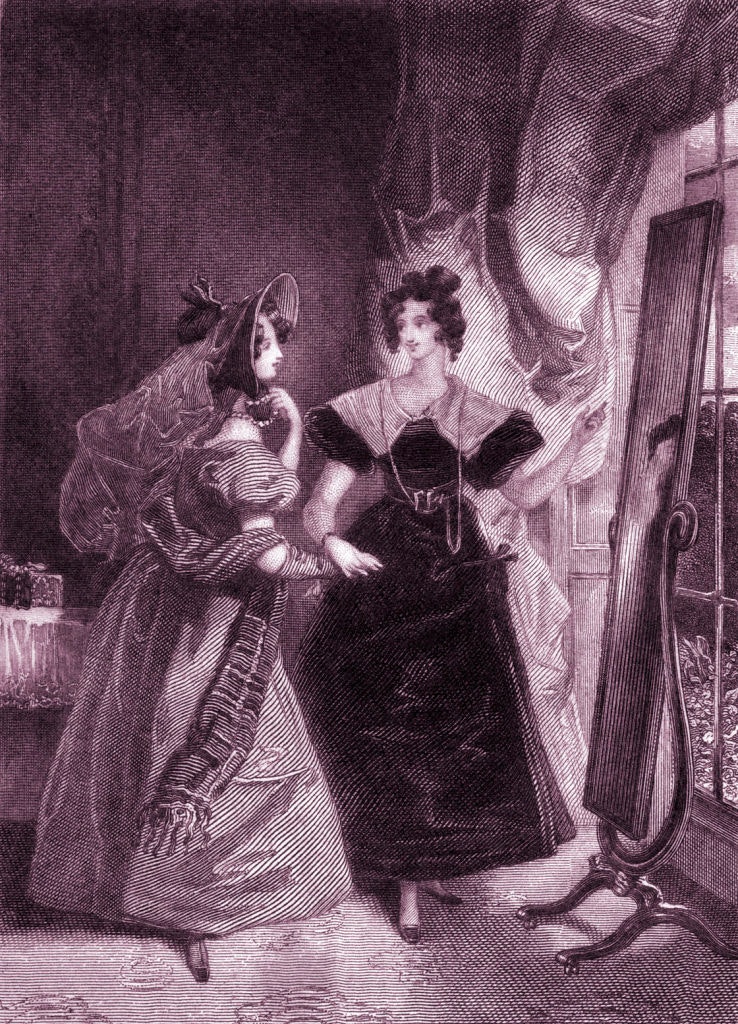Beware of trans affirmation therapy
The feminist fix: Empower teenage girls, rather than telling them who they are
“Beware of trans affirmation therapy” is the latest article in Julie Bindel’s online column for The Critic, “The feminist fix”, which explores feminism’s answer to today’s challenges. The previous article, on Will Smith’s sexist excuses for violence, can be read here.
This week the government has banned conversion therapy for gays but, in a major kerfuffle, not for trans people. I wasn’t surprised. As the EHRC rightly points out, the Government consultation document on the topic contained “no clear definition of what will amount to “conversion therapy”. Neither was it clear about “the meaning of ‘transgender’; — a term which has no clear legal meaning, is potentially wider than the concept of gender reassignment in current UK law, and is understood by different people in different ways”. So why all the confusion? What does this all mean for gay and dysphoric youth? And how does it relate to my own experience of conversion therapy?
In 2014, during research for a book on lesbian and gay culture I decided to challenge some of the mythology around what conversion therapy actually is and is not. I was sick of some conservative-minded gay men who would only speak out against conversion therapy because they believed that there is something such as a “gay gene”, and therefore sexuality is hard-wired in the womb. Their argument was, in a nutshell, that lesbians and gay men should be afforded tolerance on the basis that we “can’t help it”.
These gay men argued that the “born this way” strategy would overcome prejudice and achieve equality. I disagree. Firstly, I have long been sceptical of the notion that sexual orientation is in any way predetermined. Even if the “gay gene” were found once and for all, what difference would it make?
Whether you are black, disabled, Jewish or belong to many oppressed minority groups may be determined at least in part by genes, but this has not prevented prejudice and discrimination towards these groups. To my mind, it is politically immature to argue for our rights on the grounds that we have no control over what and who we are.
I voluntarily undertook a gruelling week of intensive ‘therapy’
Although many lesbians experience our sexual desires as hard-wired from an early age, many others are only able to come out later in life having been railroaded into what feminists refer to as “compulsory heterosexuality”. This may include a variety of societal expectations, marriage to men, social opprobrium directed at lesbians and lesbian relationships, religion, and distaste for the depiction of lesbian relationships as they are portrayed in culture (e.g., porn). Many more women would be lesbians, these feminists argue, if they were freer from these constraints of patriarchy.
We are all subject to those forces, to different degrees and in different ways. Many lesbians and gay men have undergone more extreme and traumatic pressure, including conversion therapy. This “therapy” seeks to convert them to exclusively heterosexual practices (if not desires) and may involve extreme and abusive techniques.
Whilst researching my book, I went undercover, posing as a lesbian who wanted to be straight, in order to experience a gruelling week of intensive “therapy”. I was told, for eight hours each day, that I was broken, badly raised, sexually abused in childhood, mentally unwell, running from God. Even though I was “in role”, like an actor on set, I would return to my hotel every evening experiencing low moods, panic attacks and self-doubt.
I had been out as a lesbian for almost 40 years when I underwent this conversion therapy, and I was by no means forced or even persuaded to undergo it, but I still didn’t escape the horrors, or the aftereffects. The effects of this type of therapy on a young person are often utterly devastating.
Trans Rights Activists in this debate are trying to compare the type of therapy I underwent to offering exploratory talking therapies to nonconforming or gender dysphoric young people. The only therapeutic approach acceptable to these extremists is the “affirmation model”. What does this look like for nonconforming and dysphoric youth?
As a 15-year-old I felt really grim about being a girl and a lesbian. Because I was attracted to girls, and rejected feminine frippery, I was constantly asked if I was a boy. Young women throughout the ages have had similar experiences, but nowadays if they go to a gender clinic, they may end up in “affirmation therapy”. They will be prescribed puberty blockers, followed by testosterone, double mastectomy, hysterectomy and lifelong medical treatment.
Rather than asking “are you okay”, this new model “affirms” teenagers in their chosen gender identities. Rather than asking whether teenagers are unhappy because they are being bullied for their sexuality, they are given unnecessary hormones. If they don’t get these fast enough from one therapist, there is evidence that they go “shopping” for another one.
Growing up, girls are shamed for their periods; they watch their male peers overtake them in size and strength; they become subject to the male gaze; they are catcalled, objectified, sexually abused; they often feel powerless and sometimes out of control. For many of these girls, a male identification is a shield against all of this, maybe the first time they’ve made a stand and tried to take up some space.
Being gay requires no hormones, surgeries or deception
Responsible, empathic therapy has to deal with this, and help these young women to understand why they feel how they do, before setting them on the road to a lifetime of unnecessary medical treatments. It is precisely this type of therapy that trans activists wish to ban.
They want to ban the type of support that would have helped me: a confused, self-hating teenager, who would have grabbed the opportunity to transition with both hands. And yet, here I am, an out and proud lesbian of more than 40 years.
That said, I really could’ve done with some therapy when I was struggling with the feelings I had developed for a girl in my class — a friendly, skilled ear, to listen to my distress and tell me I was perfectly fine as I was. A good dose of feminism would have helped me to understand why anti-lesbian prejudice exists, and how it contributed to my distress. The kids today are no different. But instead of being given the tools to fight their oppression, they are presenting at gender clinics and being put on hormones.
It is known that the majority of children who develop gender dysphoria go on to be lesbian or gay later in life, and continue to live as their biological sex, if only they can avoid being “affirmed” as trans and going down the medical pathway.
Being gay requires no hormones or surgeries, and no deception. On the other hand, instant affirmation of a trans identity for young gender nonconforming people is nothing more and nothing less than selling the medicalised lie to lesbian and gay young people: that they can somehow become straight. Affirmation therapy on the one hand, and gay conversion therapy on the other, are human rights violations and unacceptable on every level.
The feminist fix? Rather than telling confused children that the reason for their distress is that they are actually the opposite sex, give them a listening ear, and a good understanding of how women and girls are treated, and a feminist community, and some really good books. Turns out that the feminist fix is… feminism.
Julie Bindel’s latest book, Feminism for Women: The Real Route to Liberation, was published in September 2021.
Enjoying The Critic online? It's even better in print
Try five issues of Britain’s newest magazine for £10
Subscribe














